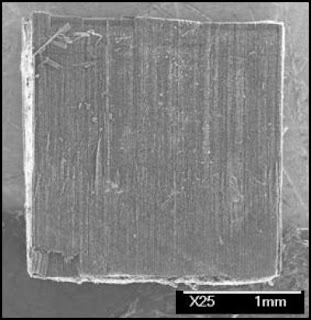Tough tubes -- Carbon nanotubes endure heavy wear and tear, Study suggests nanotube structures hold potential for creating synthetic tissue, muscles
The report, “Fatigue resistance of aligned carbon nanotube arrays under cyclic compression,” appears in the July issue of Nature Nanotechnology. Despite extensive research over the past decade into the mechanical properties of carbon nanotube structures, this study is the first to explore and document their fatigue behavior, said co-author Victor Pushparaj, a senior research specialist in Rensselaer’s department of materials science and engineering.
“The idea was to show how fatigue affects nanotube structures over the lifetime of a device that incorporates carbon nanotubes,” Pushparaj said. “Even when exposed to high levels of stress, the nanotubes held up extremely well. The behavior is reminiscent of the mechanics of soft tissues, such as a shoulder muscle or stomach wall, which expand and contract millions of times over a human lifetime.”
Even after 500,000 compressions, the nanotube block retained its original shape and mechanical properties. Similarly, the nanotube block also retained its original electrical conductance.
In the initial stages of the experiment, the force needed to compress the nanotube block decreased slightly, but soon stabilized to a constant value, said Jonghwan Suhr, an assistant professor of mechanical engineering at the University of Nevada in Reno, who received his doctorate from Rensselaer in 2005, and with Pushparaj contributed equally to this report.
As the researchers continued to compress the block, the individual nanotube arrays collectively and gradually adjusted to getting squeezed, showing very little fatigue. This “shape memory,” or viscoelastic-like behavior (although the individual nanotubes are not themselves viscoelastic), is often observed in soft-tissue materials.
While more promising than polymers and other engineered materials that exhibit shape memory, carbon nanotubes by themselves do not perform well enough to be used as a synthetic biomaterial. But Pushparaj and his fellow researchers are combining carbon nanotubes with different polymers to create a material they anticipate will perform as well as soft tissue. The team is also using results from this study to develop mechanically compliant electrical probes and interconnects. ###
In addition to Pushparaj and Suhr, other contributing authors of the paper include Pulickel Ajayan, the Henry Burlage Professor of Materials Science and Engineering at Rensselaer; Omkaram Nalamasu, professor of chemistry and materials science and engineering at Rensselaer; Lijie Ci, Rensselaer research associate; Subbalakshmi Sreekala, a research associate in the department of mechanical and aerospace engineering at Princeton University; and X. Zhang, research associate in the school of materials science and engineering at Shanghai Jiao Tong University.
Funding for the project was provided by the Focus Center New York for Interconnects.
Contact: Michael Mullaney mullam@rpi.edu 518-276-6161 Rensselaer Polytechnic Institute, News from Rensselaer Polytechnic Institute July, 2007 news.rpi.edu
About Rensselaer: Rensselaer Polytechnic Institute, founded in 1824, is the nation’s oldest technological university. The university offers bachelor’s, master’s, and doctoral degrees in engineering, the sciences, information technology, architecture, management, and the humanities and social sciences. Institute programs serve undergraduates, graduate students, and working professionals around the world.
Rensselaer faculty are known for pre-eminence in research conducted in a wide range of fields, with particular emphasis in biotechnology, nanotechnology, information technology, and the media arts and technology. The Institute is well known for its success in the transfer of technology from the laboratory to the marketplace so that new discoveries and inventions benefit human life, protect the environment, and strengthen economic development.
Technorati Tags: Nano or Nanotechnology and Nanotech and Carbon nanotubes or Rensselaer Polytechnic Institute and shape memory or synthetic biomaterial and mechanics of soft tissues or Nanospheres revolutionize biodiesel production or Seven Wonders of the World Mausoleum of Halicarnassus and President Unveils Renovated Press Briefing Room VIDEO PODCAST
















No comments:
Post a Comment